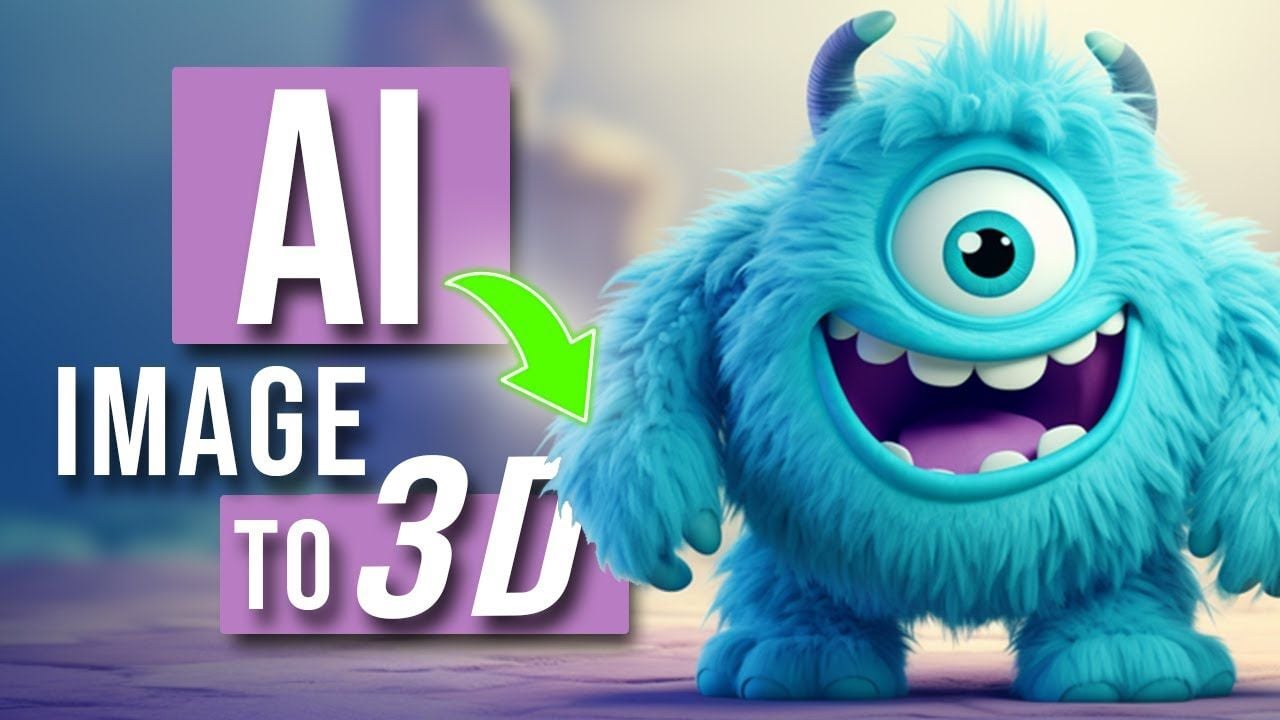If your creative workflow requires you to build 3D models you might be interested in a new AI tool currently in its early stages of development. Harnessing the power of AI and machine learning you can now transform simple flat 2D images into 3D models. Enabling you to take any images you may have created with AI image generators such as Midjourney, Stable Diffusion or even the new DallE 3 into 3D models. That you can then take into 3D modelling software such as Blender.
But before you start you have to remember that this machine learning AI tool is still in early development and doesn’t completely transform any flat 2D image into a fantastic 3D model ready to take to production. However in its latest version it is still capable of creating 3D models from clean and simple flat images you can see a few examples here. Although a more complex 3D images it currently does struggle. Although more complicated 3D images, that may not have worked perfectly will still be capable of being modified further in Blender perhaps give you a starting point for scale and at least a 3D model that you can then manipulate further.
The application is called the DreamGaussian: Generative Gaussian Splatting for Efficient 3D Content Creation which is quite a mouthful. It is available to use for free over on the Hugging Face website and the online application has been built using Gradio. If you have not come across Gradio, it has been specifically designed to provide an easy way to build and demonstrate your machine learning models, enabling you to incorporate a user-friendly web interface so that anyone can use it. Check out the demonstration video below to learn more about its capabilities and limitations.
Converting 2D images into 3D models using AI
DreamGaussian is a 3D content generation framework AI tool has been designed to be user-friendly, requiring users to simply drag and drop an image and click Generate 3D to start the process rolling.
Other articles we have written that you may find of interest on the subject of AI tools :
Transforming 2D images into 3D models
The transition from 2D images to manipulable 3D models would represent a quantum leap in the workflow for 3D designers, modelers, and production teams. In traditional 3D modeling, the process often begins with a concept sketch or a 2D image. Designers then have to manually interpret these flat visuals and reconstruct them in a 3D environment. This involves a significant amount of time and expertise to ensure that the 3D model accurately represents the original concept. The manual process is not only labor-intensive but can also introduce errors or inconsistencies that may require further revisions.
With the capability to automatically convert 2D images into 3D models, you essentially remove a large chunk of the manual labor involved. Imagine simply importing a 2D sketch into software like Blender and having it automatically converted into a 3D model that’s ready for manipulation. This would dramatically accelerate the initial stages of design and modeling, allowing professionals to focus more on refining and enhancing the model rather than constructing it from scratch. It would also make the entire design process more accessible to those who may be skilled in concept creation but not necessarily experts in 3D modeling software.
Furthermore, this advancement could streamline collaboration across different teams in a production pipeline. For instance, concept artists, modelers, and animators could work more cohesively, as they would all be dealing with the same automatically-generated base model. This ensures that everyone is on the same page from the get-go, thereby reducing misunderstandings and back-and-forths. In industries like film, gaming, and virtual reality, where time is often of the essence, such efficiencies could translate into significant cost savings and quicker time-to-market for products.
Despite these limitations, the potential of DreamGaussian is undeniable. The tool could potentially be a fantastic AI service to create 3D models from images. This could open up an entirely new avenue for digital artists and graphic designers, providing them with a new way to improve their workflows. Obviously the machine learning tool requires more work, yet provides a fantastic glimpse at what we can expect in the future for the creation of 3D models. Now that 2D images so easy to create converting them to 3D models seems to be the next logical step.
DreamGaussian represents a significant advancement in the field of 3D content creation, harnessing the power of AI. Enabling users to create 3D models from 2D images. While there are areas for improvement, the tool’s potential for enhancing the efficiency of 3D creation and opening up new opportunities is undeniable.
Image Credit : Mr Lemon
Filed Under: Technology News, Top News
Latest aboutworldnews Deals
Disclosure: Some of our articles include affiliate links. If you buy something through one of these links, aboutworldnews may earn an affiliate commission. Learn about our Disclosure Policy.







